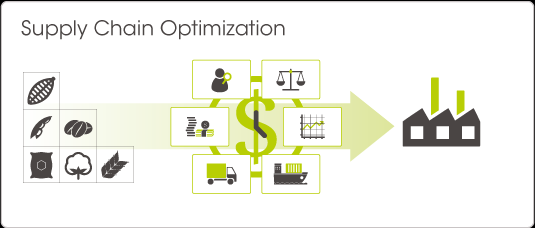The United States has one of the most sophisticated agricultural production industries in the world, and when you combine that precision with the coming expansion in west-bound, trans-Pacific shipping capacity, it should mean that supply chain costs will continue to drop for American commodity exporters.
Unfortunately, that simply isn’t the case. Ocean carriers have seen the rates they can charge dropping in recent years and are now so low that there’s little incentive to innovate and provide top-notch services, according to an article entitled, “Supply Chain Inefficiencies Frustrate US Commodity Exporters” (The Journal of Commerce, June 27, 2014). That means much of the savings they derive from lower rates are offset by poor supply chain performance.
Of particular frustration are the delays and costs incurred due to improper processing of shipping documents. Given the tight margins that commodity traders operate on – not to mention the risk of contract defaults and other complications that arise when shipments aren’t delivered to buyers on schedule – it’s no surprise that merchants are looking for answers to their supply chain challenges.

The concept of supply chain optimization is grabbing more headlines than ever before, but some industry thought leaders saw this issue coming years ago. “Although the term ‘smart commodity management’ is new to some, the concept has actually been around for quite some time,” says Richard Williamson, CEO of Gen10, a leading provider of software solutions for commodity trading and risk management (CTRM).
“Traditionally, CTRM systems focused almost exclusively on the functions that gave them their name: trading and risk management. But the risks they focused on were trading and financial risks, leaving operational risks somewhat neglected. For some reason, they were not perceived as being worth the trouble.”
As the supply chain challenges mount, many commodity trading firms are scrambling to rectify that mistake. Companies that focused on the trading and risk management aspects of their business – at the expense of their logistics and supply chain operations – missed a huge opportunity to improve their internal business processes, choose the best suppliers and partners, and provide better service to their customers.
That was a difficult lesson for many traders to learn, but if they take steps now to improve their supply chain capabilities, they’ll gain a competitive edge in the marketplace, Williamson says. His company spent its first decade developing solutions for the cotton industry, which due to its many players and highly complex documentation requirements, has a supply chain more challenging than virtually any other commodity. That experience is the reason Generation 10 spent years developing the most robust and sophisticated logistics and supply chain management capabilities of any CTRM solution available in the marketplace.
“Fundamentally, if you choose a CTRM system with strong logistics and supply chain functionality, you’ll be in a better position to gain competitive advantage, optimise your workflows, establish metrics, set benchmarks, and identify trends by analysing performance over the long term,” Williamson concludes.


